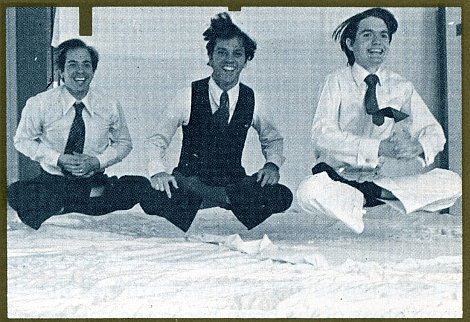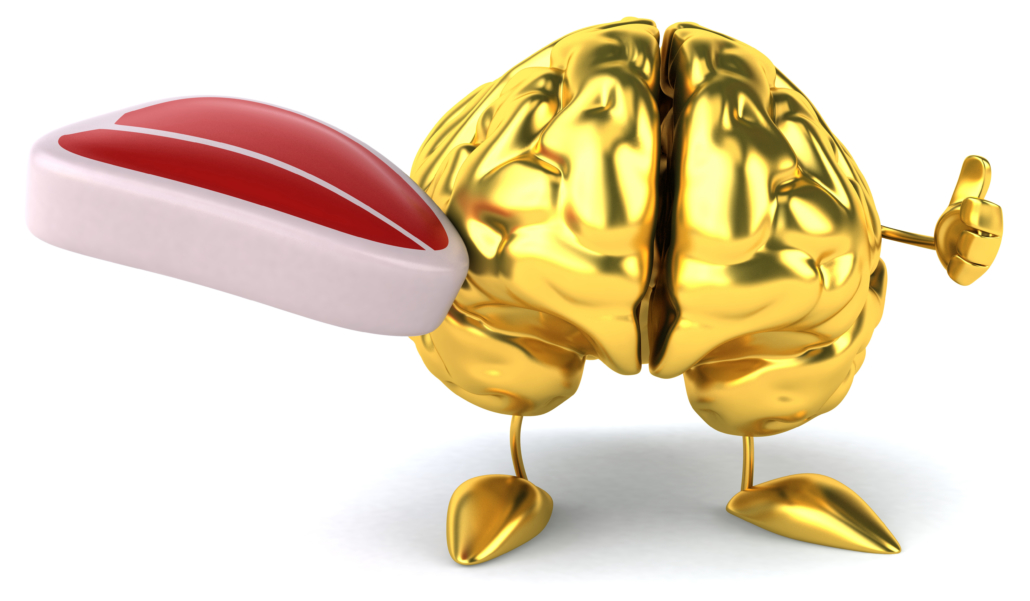We include products in articles we think are useful for our readers. If you buy products or services through links on our website, we may earn a small commission.
9 Types of Meditation: A Breakdown of the Most Popular Practices

There are hundreds of types of meditation that come from many different spiritual traditions, religions, and cultures.
Yet, there is no scientifically or universally accepted “best” or “most effective” way to meditate. Each type affects the brain, mind, body, and worldview in different ways. Finding the type of meditation that works for you is an individual choice.
This guide breaks down some of the most popular types of meditation to help get you started on the path that’s right for you.
Table of Contents
What Is Meditation?
Meditation can be generally defined as mind and body techniques intended to bring about a heightened state of awareness and focused attention.
Depending on the type of meditation, these heightened states are aimed at creating changes in consciousness that lead to outcomes including:
- Deep relaxation
- Reduced stress
- A calm mind
- Insight into the nature of reality
- Liberation from suffering
- Awakening physical and spiritual energies
- Communing with god, the universe, or nature
Numerous meditation techniques have been clinically shown to result in a wide variety of physical and psychological benefits.
Meditation Fast Facts:
- There are hundreds of types of meditation.
- Meditation has been practiced for thousands of years in cultures all over the world.
- Meditative practices are part of every major religion, including Buddhism, Hinduism, Christianity, Judaism, and Islam.
- Though meditation has been developed and used for religious purposes, many people practice it independently of religion or spirituality.
- Many different types of meditation are now used psychotherapeutically by millions of people.
9 Types of Meditation Practiced Today
Mediation may be an ancient religious practice, but as it’s practiced today, it’s less about faith and more about changing your experience of consciousness. These changes can positively reshape your relationship to all of life including:
- How you respond to life events
- How you experience your thoughts
- Your awareness of your body, senses, and cravings
- How you consider other people and act towards them
Nowadays, in our fast-paced, stressful and distraction-filled lives, the power of meditation to create these changes has led to a surge in popularity.
Between 2012 and 2017 the number of Americans practicing daily meditation increased from 4.1 percent to 14.2 percent. And the use of meditation by U.S. children (aged 4 to 17 years) increased from 0.6 percent to 5.4 percent over that same time period.
A 2018 poll by Pew Research estimated that 40% of Americans meditated weekly, including 19% of atheists, and 26% of unaffiliated religious people.
To help you find the type of meditation that’s right for you we’ll take a closer look at these 9 popular styles including:
- Mindfulness
- Vipassana
- Mettā (Loving kindness)
- Zen
- Mantra meditation
- Transcendental Meditation
- Chakra meditation
- Visualization
- Gratitude meditation
Not all of these types of meditation are right for everyone. Each type fits with different temperaments, skill sets, and goals. Let’s take a closer look at each type and find the type that fits you.
Mindfulness
One of the most well-known definitions of mindfulness is the awareness that arises through “paying attention in a particular way: on purpose, in the present moment, and nonjudgmentally.”
Origins
Mindfulness meditation encompasses a set of techniques adapted from Buddhist traditions dating back over 2500 years.
Though practiced for centuries in South and East Asia, it wasn’t until the 1970s that mindfulness was introduced to the West in spiritual, medical, and mental health contexts by pioneers like biologist John Kabat-Zinn and others.
How to Practice
Practicing mindfulness begins at the most obvious levels of experience, often by noticing sounds in the room, your breath, or the sensations in your body.
In the early stages of practice, the focus is on strengthening your ability to focus your attention. This entails learning how to switch your attention from one part of the experience to another.
As you get better at focusing your attention—not through perfect focus, but by being willing to start over, again and again—you begin to notice subtler aspects of experience.
This simple act of noticing breaks patterns of how we identify with and react to our experiences. These changes are deep, affecting how your nervous system responds to things that would normally feed anxiety, addictive behaviors, and depression.
After only a few weeks of practice, mindfulness can help you to see people—including yourself— more clearly, without thick layers of judgment and bias.
For step-by-step guide to practicing mindfulness click here
Orientation
In mindfulness your orientation or the way you look at your experience is important. Think of it as your attitude. In mindfulness practice, you cultivate an attitude of curiosity, openness, and acceptance.
Brain scans of meditators who were intentionally curious show that curiosity dramatically quiets the brain systems that correspond with our experience of being an “I” or ego. This is important because these are the systems responsible for addictive and destructive habits.
Acceptance
This experience is often called “acceptance”. But it’s not passive or resigned. Mindful acceptance is your ability to experience things fully, without suppressing any part of it, even if it’s uncomfortable. It also means not getting too preoccupied with, and attached to good experiences.
Benefits of Mindfulness Practice
Mindfulness is the most researched type of meditation with over 1000 studies to date. These studies show consistently positive effects on many factors of health and wellbeing. Here are just a few:
- Studies show that mindfulness improves many markers of cognitive function, including enhanced attention and memory, age-related memory loss, and increased attention and mental quickness even in older people.
- A review of more than 200 studies found mindfulness practices to be especially effective for reducing stress, anxiety, and depression.
- Mindfulness has also been shown to help people with specific problems including pain, smoking, and addiction.
- Mindfulness-based interventions can also improve physical health. Studies show that it can boost the immune system while reducing the severity of diseases including irritable bowel syndrome, post-traumatic stress disorder, and fibromyalgia.
Vipassana
This ancient type of meditation is aimed at using focused awareness to intensely examine certain aspects of your existence. This examination is intended to liberate you from the suffering caused by false perceptions.
Vipassana is a Buddhist term often translated as “insight”, which is expanded on as, “insight into the true nature of reality.” The key areas of contemplation in vipassana include:
- Suffering/unsatisfactoriness: we desire what we don’t have, and are never fully gratified by the things we do have.
- Impermanence: everything is constantly changing.
- “Non-self”, or “emptiness”: There is no essential “you”. Your thoughts, sensations, and desires are always changing. The sense of an intrinsic individual experiencer, an “I” or self, is an illusion.
Origins
From the earliest period of Buddhism over 2500 years ago, vipassana was one element of a collection of practices and qualities of mind seen as important for spiritual awakening.
Though vipassana disappeared in the 10th century, it was revived in the 18th century in Burma, and eventually popularized in the West in non-religious forms, most popularly S. N. Goenka.
Each year hundreds of thousands of people around the world undertake 10-day retreats at centers founded by Goenka.
Vipassana is the form of meditation that many Western mindfulness teachers studied in places like Burma and SouthEast Asia. Many of the principles and techniques of what we think of today as mindfulness, is derived from traditional vipassana practices, specifically concentration on breath.
The Practice
The aim of vipassana practice is to bring “insight into the true nature of reality,” via contemplation of several key areas of human existence: “suffering, unsatisfactoriness,” “impermanence,” “non-self,” and “emptiness.”
The discipline is rooted in the idea that we as humans have the capacity to overcome our impulses, reactivity, pain, and conflicts.
Though the specifics of practicing vipassana can differ between communities and teachers, it generally begins with mindfulness of breath as a way to stabilize the mind and strengthen your faculties of focusing and noticing.
On a standard 10-day retreat, the first two to three days can be spent focusing only on your breath for 8-10 hours a day in a seated posture. Once you’ve achieved what is called “access concentration”, you then turn your attention to sensations on the body.
Beginning at the head and continuing down to your toes, and back up, you bring awareness to every sensation–subtle, intense, painful, pleasant etc.– without judgment or attachment.
Noticing your changing sensations along with your moment-by-moment reactions, resistances, and desires, gives you a direct experiential insight into realty. You experience how attachment causes suffering, the impermanent nature of all phenomena, and the liberating principle of non-self.
To get started you can follow guided practices here
Benefits of Vipassana
Vipassana is another widely studied type of meditation. Some of the most notable findings come from research conducted in prison settings. A 4-year trial of Vipassana practice at King County Jail, showed that participating inmates were 20% less likely to return to prison.
Another study looking at numerous vipassana program found that inmate meditators used less alcohol, marijuana, and crack cocaine, while improving social and psychological functioning, showed higher optimism. Among inmates with mental illness, vipassana meditators showed less severe psychiatric symptoms.
Mettā (Loving-Kindness)
Mettā meditation is often referred to as loving-kindness. Associated mainly with Buddhism, mettā aims to cultivate unconditional kind and loving attitudes toward oneself and others.
Doing mettā generally consists of silently repeating phrases expressing kindness and compassion. These phrases are often directed at internal visualizations of the people you are wishing well.
Origins
Though mostly associated with Buddhist traditions, principles of mettā pre-exist Buddhism and can be found in early Indian texts associated with Jainism and Hinduism.
The word mettā is from the Pali language of 5th century Buddhism, and is derived from Sanskrit, an even older language of India. Mettā means benevolence, loving-kindness, friendliness, goodwill, and active interest in others.
How to Practice
A common way to practice mettā begins with holding the image or the feeling of another person in your mind. Then you begin to offer positive wishes or intentions to the person. This could take various forms including:
- Silently reciting the phrase, “May you be safe, happy, and healthy.”
- Visualizing a beam of warm light extending from your body to theirs, carrying these wishes to them.
- Holding the person in your mind with a feeling of appreciation, compassion, or generosity.
The practice becomes progressively more difficult. You start by visualizing someone who it’s easy to feel love and compassion towards–maybe your mother, or a mentor. Then you progress to a person you feel neutral towards, and on to people who have done you wrong, to people who have harmed many others. However, not all versions of metta arrive at the most difficult target of your well-wishes.
Though not technically mindfulness, mettā is often used to support mindfulness practice.
Benefits of Mettā
Studies show that metta meditation can improve wellbeing in many areas including:
- Making people less critical towards themselves.
- Decreasing PTSD symptoms while increasing self-compassion in people with PTSD.
- Improves longevity by increasing telomere length.
- Reducing physical pain and migraines.
Zen
Zen meditation, also known as Zazen, is a Japanese type of Buddhist meditation that aims at achieving a direct insight into the nature of reality.
Origins
The word Zen is Japanese, though it’s derived from the Chinese word Chan, which itself is a transliteration of the Sanskrit word dhyana–the ancient Indian word for meditation.
Though zen (as chan) was part of Chinese Buddhist practice beginning 2000 years ago, it did not enter Japan and become zen, until the 13th century. After arriving in Japan, zen was absorbed into and blended with pre-existing Japanese cultural aesthetics and norms.
The Practice
There are ways of practicing zen meditation. Two of the most common include:
- Observation of breath: Sitting in a seated meditation posture with a straight spine and focusing on your breath entering and exiting your nostrils. When starting out this is aided by counting the breath in your mind. With each combination of inhale and exhale you count once, from 1-10. Then start over again, or count backwards.
- Shikantaza (“just sitting”): With this technique there is no specific object of focus. You simply remain aware of the thoughts spontaneously passing through your mind, sensations in the body, and observation of the world around you.
Benefits of Zen meditation
Though zen has not been as formally researched as mindfulness, it is a similar form of meditation and offers many similar benefits including reductions of stress and emotional regulation.
Mantra Meditation
A mantra is a syllable or word that meditators repeat. Mantra meditation is similar to other forms of focused attention meditation. But instead of focusing on the breath, you focus on a syllable, word, or phrase.
In some types of mantra meditation, the word is believed to have specific meaning, or that the vibrations of certain mantras help specific types of people. In these schools, such as Transcendental Meditation, it is important to receive your mantra from a certified teacher trained in matching you with the right mantra.
Origins
One of the oldest forms of meditation, the earliest mantras were composed in India 3500 years ago in a language called Vedic Sanskrit. That’s where the word ॐ (Aum, Om) comes from. Often referred to as the “root mantra”. In Hindu traditions Om is believed to be the first sound on earth.
Mantra practices appear in Buddhist, Jain, Sikh, Islamic, Eastern Orthodox Christian, and Taoist traditions.
How to Practice
Mantra meditation is usually practiced sitting with a straight spine and closed eyes. You then repeat the mantra in your mind throughout the entire session.
In other versions of mantra meditation, you softly whisper the mantra, as a way to aid your concentration. Mantra meditation can also take a more devotional form called japa, where you lovingly repeat sacred sounds associated with the name of God, or gods.
Common mantras include:
- om
- so-ham
- om namah shivaya
- om mani padme hum
- rama
- yam
- ham
Benefits of Mantra Meditation
Most studies looking at mantra meditation have been done on groups practicing Transcendental Meditation. Some of the most striking outcomes including:
- 21% increase in highschool graduation rate
- 40-55% reduction in symptoms of PTSD and depression for military veterans
- 47% reduced risk of cardiovascular-related mortality
- Decreased high blood pressure–on par with first-line antihypertensives.
Tanscendental Meditation
Transcendental meditation is a specific form of mantra meditation. It is taught one-on-one by teachers who are trained and licensed by Maharishi Foundation .
The teacher chooses a mantra specifically for you and trains you in how to use it. Your mantra is determined by factors, including the year you were born, and the year the teacher was trained.
Origins
Transcendental Meditation was created by Maharishi Mahesh Yogi in India in the mid-1950s and became popular in the West in the 1960s.
Perhaps the most famous and outspoken practitioner of TM is film director David Lynch.
How to Practice
The practice is described as effortless and is done with eyes closed, twice a day for 20 minutes each session.
There is also an advanced form of TM called Yogic-flying, where mantra repetition is done in a way that produces an upwelling of energy. This energy allows the practitioner to literally hop around in a seated posture. To this day there are yogic flying competitions for the height and length of hops.

Authors of Men are from Mars, Women are from Venus Johnny Gray (right) doing yogic flying at Maharishi’s school in Switzerland.
For the benefits see the benefits of mantra meditation above.
Chakra meditation
Chakra meditation is aimed at opening and aligning the body’s seven chakras, or energy centers. Practitioners believe that blocked and unbalanced chakras are associated with physical and mental disorders.
Origins
Chakra is an ancient Indian Sanskrit word that means circle or wheel. Working with chakras as energy centers in the body has been part of both Hindu and Buddhist traditions for millennia.
Our Western system of 7 chakras was developed in the late 19th and early 20th centuries.
How to practice
Familiarize yourself with each chakra, its properties and qualities. Bring your awareness to the chakras that need to be opened or re-balanced. Focus on each location in the body while picturing energy flowing through that area. Each chakra has a corresponding color that can be visualized as energy flowing to and from those areas.
Benefits of Chakra Meditation
Potential benefits include self-healing, greater awareness of subtle body cues, and deep relaxation.
Visualization Meditation
Visualization meditation is about manifesting things you want in life through an intentional process of bridging them into consciousness with intense focus. This type of meditation is also known as Creative Visualization.
Origins
Visualization meditation practices have likely been around for centuries. They are often linked to the idea of the mind’s eye developed by The Roman statesman Cicero. This is the part of the mind that can focus and change internal images.
In the late 1970s, New Age author Shakti Gawain wrote a manual for the use of visualization meditation for personal growth. More recently, visualization meditation has received attention from positive psychologists and physicians.
How to Practice
Sit comfortably with your eyes closed. Bring into your mind an image of someone or something that you either want to bring into your life, or let go of. Keep your focus on this image, gently returning your focus each time it wanders. Allow your awareness to notice any physical sensations that arise. Heat associated with anger, or involuntary twitches, increased heart rate. Just notice, building your tolerance without resistance or attachment. Continue to hold the image in your mind
Benefits
The potential benefits of visualization meditation include greater clarity around desires, increased tolerance around discomfort, and improved focus and follow through with life goals.
Gratitude Meditation
Gratitude meditation is the focused and intentional experience and expression of gratitude.
Origins
Gratitude meditations have been a part of all religions and cultures for millennia. Speaking to the universality of gratitude meditation, mindfulness teacher and psychologist Jack Kornfield states:
“Buddhist monks begin each day with a chant of gratitude for the blessings of their life. Native American elders begin each ceremony with grateful prayers to mother earth and father sky, to the four directions, to the animal, plant, and mineral brothers and sisters who share our earth and support our life. In Tibet, the monks and nuns even offer prayers of gratitude for the suffering they have been given”
How to Practice
To practice gratitude, you have to first get into a gratitude attitude or grateful orientation to life. Researchers identify a two-step process. (1)“recognizing that one has obtained a positive outcome” and (2) “recognizing that there is an external source for this positive outcome.”
There are numerous guided meditations that involve visualizing and expressing gratitude. Here are 3 proven gratitude practices that you can try right now.
Benefits of Gratitude Meditation
Practicing gratitude has been shown to benefit our physical and mental health, improve our careers, deepen our relationships , help us follow through with healthy habits, and instill a durable sense of optimism and happiness.
How long will it take to work?
Though these 9 types of meditation lead to positive psychological and physical outcomes, meditation is not necessarily focused on results.
The most important part of meditating is the practice itself. However, the effects of meditation often show up very quickly. Many meditators report immediate improvements after just one session. But don’t worry if that’s not you.
The studies listed above usually follow meditators for weeks and months as opposed to years. The positive feelings of less stress, greater acceptance, and inner-peace strengthen over time and continue beyond the sessions.
How often should I meditate?
To get the greatest benefits of your type of meditation, it’s recommended that you meditate daily.
However, any meditation is better than none at all. One good way to make it a habit without causing stress or shame is to aim for 3 days a week. Then build up from there.
For some people it may feel natural to drop into meditation twice a day.
9 Types of Meditation: The Takeaway
There is no one-size-fits-all type of meditation. Each of these 9 types offers specific experiences, changes, and benefits suitable for people with different personalities, life goals, and spiritual outlooks.
















